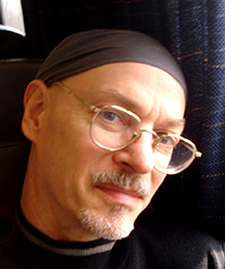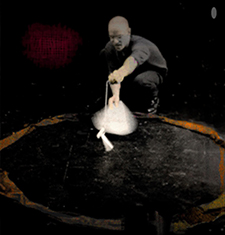CAA News Today
Staff Interview: Paul Skiff
posted by CAA — Oct 27, 2016
 Paul Skiff
Paul SkiffAs part of the new myCAA campaign where we ask our members to share with us what CAA means to them, we thought it also makes sense to share with our members more about ourselves at CAA. In this spirit, every few weeks we will post an interview with a staff member at CAA. We want our members to know who we are also.
Our first interview in the series is with Paul Skiff, assistant director for Annual Conference.
How long have you worked at CAA?
Seventeen years.
What do you do at CAA?
I handle all space use for the Annual Conference: facility specification and coordinating with facility personnel, logistics, service providers, production, marketing, and sponsorships for the Book and Trade Fair, receptions, tours, onsite direction, and the task of working up budgets for all of this. Essentially I set up the arrangements that enable us at CAA to coordinate everyone and everything into and out of the conference.
What does CAA mean to you?
CAA is a leading international organization promoting visual art and culture in a way that has direct impact on society. The conference brings together the membership, along with related professions, for a large public event that gives a high profile to the cultural sector of the host city and contributes to defining the forward direction of culture in general.
Can you talk about one of your favorite member moments?
Too many to mention, really. CAA members are so frequently a great pleasure to work with no matter what the situation. At its base the organization is a collective, and that really guides so much of what members bring.
What do you like best about the arts and working in the arts?
Art, and culture in general, provides a basis for unity across social, cultural, national, and political boundaries. In the urban culture of the United States, cultural practice is seen as an open forum with authority to comment upon—and provide a way for coping with—the prevailing conditions of the time. Applied this way, cultural practices have as their main goal establishment of a democratizing equality. What I like about one part of the particular work I do in the arts with CAA is that my efforts serve to create opportunities for thousands of people involved in art and culture. Over my time working with CAA, this has amounted to providing a wide variety of opportunities for literally tens of thousands of people involved with art and culture.
Do you have a favorite moment from the Annual Conference each year?
The closing celebration for department staff after sessions conclude on the last day of the conference, when a year’s worth of hard work is complete and you know thousands of people had a pleasurable and fulfilling experience.
 Video capture of Paul Skiff’s performance Blood Circle
Video capture of Paul Skiff’s performance Blood CircleWhat have your most recent performances consisted of?
My most recent performances have been straightforward presentations of texts and poetry spoken live, often with supplemental sound, and mostly presented for community-based cultural organizations with a vision for preserving, promoting, and strengthening local culture.
How do you feel about the differences between your art performed live or recorded on tape?
My live performance often incorporates recorded sound and images, so it is not that easy to separate the two modes of presentation. But to consider electronically recorded material separately, there is of course a vast difference with regard to the resultant sensory phenomenon. The main strength of actual live, spoken work is its generative quality, its immediacy, and its ability to create a “hearership” that can challenge existing listening institutions. With electronically recorded sound and/or images you have the rather endlessly deep toolbox of technology, which mostly amounts to applying exaggeration and distortion to live forms, and playing with time, as well as simply preserving information for transmission. I’m not saying anything profound by that, of course. Applying technology to a live performance enables an extension and transformation of form that allows for many different and new ways to present the work, seek a broader audience, and invent ever more creative solutions.
The creation of electronic information along with storage and retrieval is the most expansive creative environment for us now. At this point in our history telelectricentrism is second nature. Humanity has adapted to this so that forms of experience based on electronic image and sound increasingly dominate everyday life. We are still discovering how this is an asset and liability. It has mixed results and risky implications for our ability to really communicate. But in this for me is a great and absorbing task of applying these distorting and exaggerating technologies to instill acts of rehumanizing our culture. It’s kind of like taking something inherently dangerous and reshaping or repurposing it to provide pleasure, fulfillment, and a greater sense of shared well-being—not to mention preserving and strengthening our sense of self-worth.


